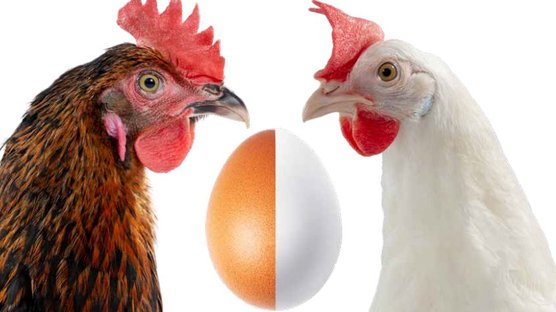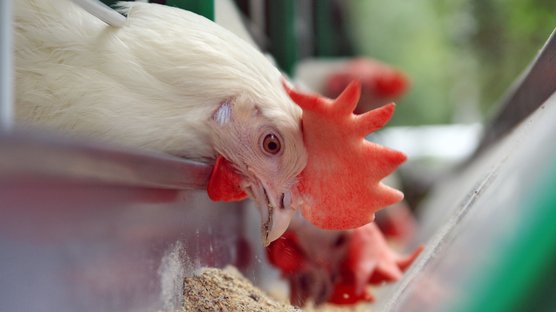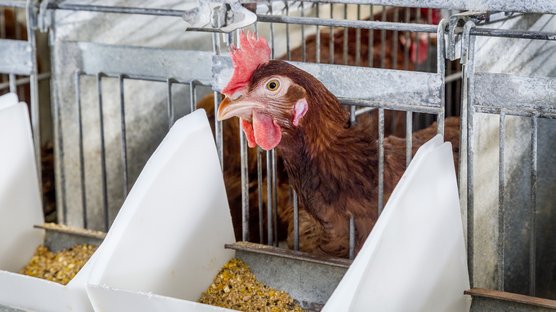
Published on June 3, 2020
Insight on light
Light is considered one of the most managerial factors affecting poultry well-being. Light has many different characteristics; light sources have many different characteristics and there are major differences between the human eye and the eye of a bird. Chickens see and perceive light differently. Animal welfare is an important issue. Livability is an important trait. Both are related to, and can be influenced by, light.
The light Emitting Diodes (LED’s) were developed to safe energy. Until 2010, incandescent lights, fluorescent lamps and metal-halide lamps were used to give us light in the dark. These light sources produce heat and emit light. LED’s emit light and produce heat.
Governments promoted the development of LED’s strongly. The quality increased and prices went down. Nowadays, LED’s are widely available and are affordable, so more and more used.
New techniques bring new opportunities and new insights.
More than enough reasons to lighten up this subject!
Why do birds need light?
Chickens need feed and water to grow and to produce. Feed and water must be of good quality and easily accessible. Light helps them to find it.
Layers and breeders must lay eggs. They must reproduce. Egg production is steered with hours of light. Daylength is important. Lighting schedules and light color influence reproduction.
Chickens need light to express their behavior. Light stimulates them, makes them more active. Light helps them to find their way in the house, in the housing system; helps them to find feed and water, to find the nests.
Light creates and prevents shade. Chickens like shade, they like darker spots for hiding and resting, to lay their eggs. They need to feel comfortable and safe in the nests. At the same time, we must prevent shade to prevent floor -and system eggs.
How do birds see light?
For birds, the visible part of the electromagnetic spectrum is bigger than for humans (mammals).
- Birds can see UV-A radiation. UV-A radiation is light for a bird; it is visible. Birds are also more sensitive for red and blue light. The bright area below shows what humans can see. The dimmed area shows the part of the electromagnetic spectrum that’s visible for birds.

Because chickens see more than we humans do, light intensity must be measured in Gallilux and not in Lux. Gallilux is the unit for measuring light intensity based on the spectral sensitivity of poultry.
- Birds recognize color at a lower light intensity. Birds are active during daytime and the way the bird's eye is designed indicates that it is important for birds to recognize color. Birds have 85% cones and 15% rods; humans have 5% cones and 95% rods. That’s why chickens can recognize color already with 8 lux light intensity. People start to recognize color at 20 lux.
- Birds recognize more single images per second. The critical flickering index of chickens is 120 Hertz, much higher than for humans.
- Birds see and perceive light. Chickens act and react on what they see, but light can also pass the skin and skull, thus influencing biorhythm and sexual development.
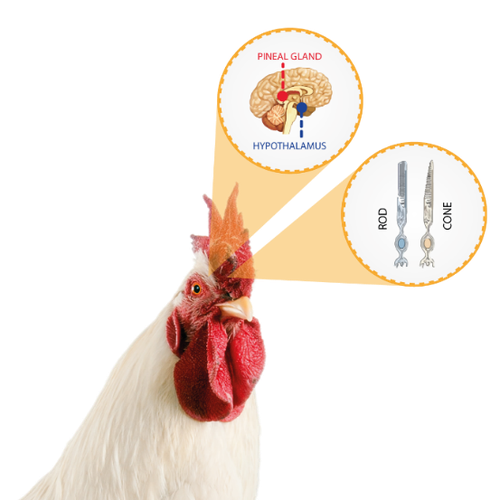
- Chickens are birds of prey, chickens have sight to all sides, at all times. Chickens can eat with one eye and check the environment with the other eye.
In this paper we will touch on 8 different aspects of light:

Light color
Light is the visible part of the electromagnetic spectrum, it ranges from violet to dark red. The color depends on the wavelength. Chickens can “see” Ultraviolet (UV) light. The visible part is only a small part of the electromagnetic spectrum. Shorter waves go through material, like x-rays. The longer waves go around material, like radio and television broadcast signals.
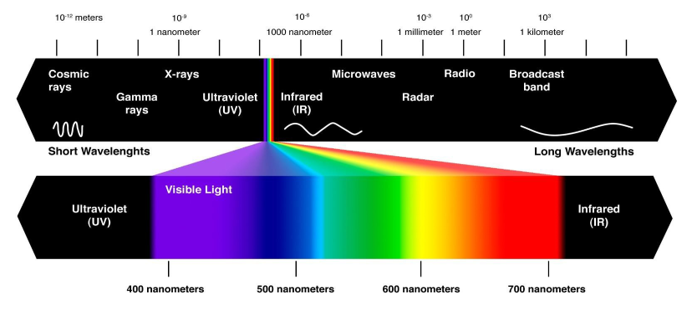
Hours of light
We manipulate the biorhythm of our chickens with light. We steer the bodyweight development and the production with daylength.
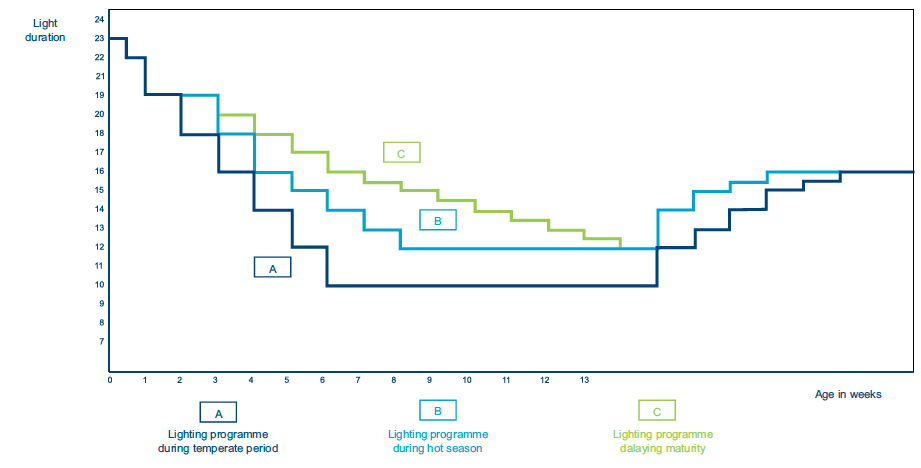
Source of artificial light
Different types of lamps have different outputs, as the graph below clearly shows. The output of these light sources is compared with the vision of a chicken (background).
The first example is from a TL light of 4000 Kelvin. The second, high pressure sodium lamps, are used to illuminate highways but are also used in broiler houses. The old-fashioned light bulb (incandescent lamp) was not so bad, but you can see here why it is not very energy efficient. It is producing a lot of heat instead of light. The last graph is from an LED with a color temperature of 4000 Kelvin.

Color temperature
What is that, 4000K?
K stands for Kelvin, which is the SI base unit of thermodynamic temperature, equal in magnitude to the degree Celsius.
The color temperature is a very important characteristic of white light.
We know that you can influence the behavior of chickens with light intensity and with the color of light. When farmers have problems with aggressive pecking, they go down in light intensity and make lights red.
In the graph pictured below you can see that different light sources emit white light with different color temperatures. Natural light, i.e. daylight, also has different color temperatures.
The color temperature is expressed in Kelvin.

It seems that cold white stimulates the bird’s activity and that warm white calms them down. That is why it is advised to use light with higher color temperatures (more blue) in rearing and with lower color temperatures (more red) in the production period.
You can mimic dusk and dawn by using different color temperatures during the day. Natural light has higher color temperatures in the morning (more blue), and lower color temperatures in the evening (more red).
Natural light even changes color with the seasons. In winter, the color temperature is colder (higher) than in summer.
Light color in rearing even seems to have an influence on the sight of chickens. When you rear them in the dark or under red light, they can become short sighted (myopic). When you rear them under UV and blue light, they can become far sighted (hyperopic).
Color rendering index
The color rendering index (CRI) is an indication of how natural a light source makes colors visible. The sun has a CRI of 100. A CRI between 50-80 is moderate; between 80-90 is good and between 90-100 is very good. The CRI is a measure for the color reproduction of an artificial light source.
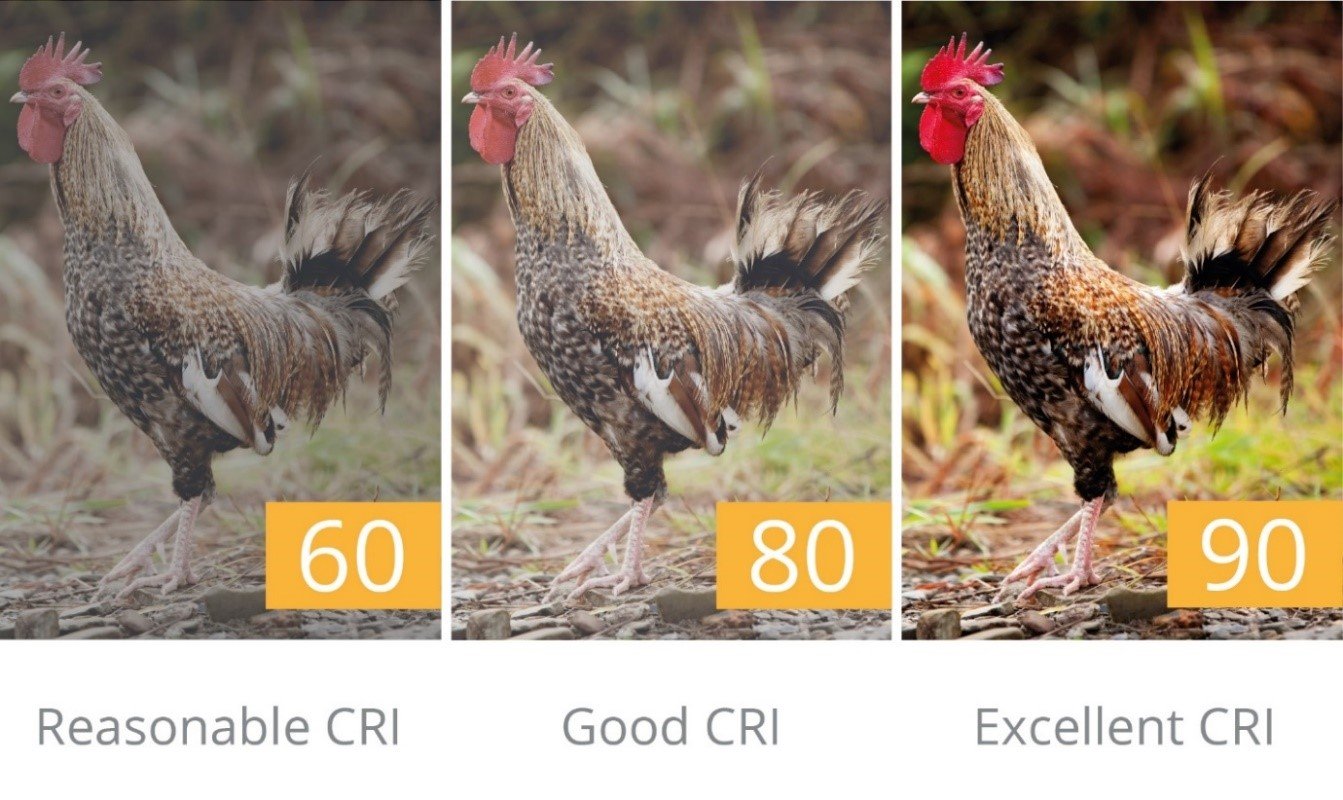
This graph shows how color codes are used. The color code 830 means: CRI is at least 80 and the color temperature is 3000K.
| New color code | Color temperature | Color | Color display |
|---|---|---|---|
| 530 | 3000 (K) | Warm white | Bad |
| 535 | 3500 (K) | Neutral white | Bad |
| 640 | 4000 (K) | Cold white | Moderate |
| 740 | 4000 (K) | Standard white | Reasonable |
| 765 | 5000 (K) | Cold daylight | Reasonable |
| 827 | 2700 (K) | Extra warm white | Good |
| 830 | 3000 (K) | Warm white | Good |
| 835 | 3500 (K) | Neutral white | Good |
| 840 | 4000 (K) | Cold white | Good |
| 865 | 6500 (K) | Cold daylight | Good |
| 930 | 3000 (K) | Warm white | Very good |
| 940 | 4000 (K) | Cold white | Very good |
| 950 | 5000 (K) | Daylight | Very good |
| 965 | 6500 (K) | Cold daylight | Very good |
Light intensity
The lumen is the total amount of visible light a light source is producing. One lux is the amount of light produced by one candela, measured at one-meter distance from the light source. One lux is 1 lumen per square meter. Please remember: These measurements are related to what the human eye sees.

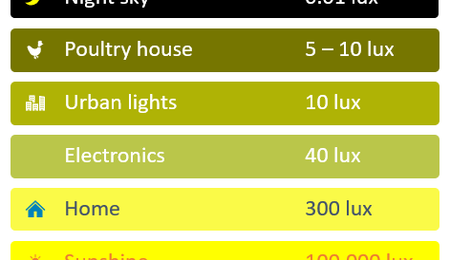
Light flickering
The flicker Fusion Frequency (FFF) is the frequency at which you cannot see the light flickering anymore. The Critical Flicker Frequency (CFF) is the highest FFF. The CFF is depending on light intensity. The CFF is related to the rate between the number of cones and the number of rods in the eye. In poultry it ranges from 20-120 Hertz. In Humans between 50-60 Hertz.
Therefore, the CFF for poultry should always be at least 120 Hertz. Better no flickering of course.
Positioning of light
The positioning of the lights in a poultry house, the light plan, is extremely important; light creates and prevents dark spots.
Chickens are birds of prey, they like to sit and rest high-up in the trees, covered from above by leaves. They need a place to hide. Nests should also be dark.
Light is needed on feed and water, to stimulate feed intake to support egg production. Light is needed above the aisles and under the system to prevent floor eggs. For parent stock, light is needed to promote successful matings.
Conclusion
Light is important for chickens! Light is important for proper development during the rearing period, to stimulate egg production and to steer the behavior of the birds.
Chickens can see much more compared to humans:
- Chickens recognize a broader spectrum of light.
- Chickens can recognize colors already at low light intensity
- Chickens can recognize more single images per second
- Chickens not only see light, but also perceive light
This means that chickens need light with a broad spectrum, including Ultraviolet A.
Lux as unit of light intensity is not suitable for chickens. Light intensity must be measured in Gallilux.
Correct positioning of the lights is very important. Create and prevent dark spots.
The Color rendering Index should at least be 80.
No flickering!
The type of light determines what chickens see.
Using different types of light sources in rearing and in production means that chickens see the same objects differently, while our objective is to train them in rearing to help them to easily find their way in the production house for an optimal performance in the production period.
Using different types of light within a house means that chickens see the same objects differently, depending on where they are in the house.
Color temperature influences behavior. Cold white lights activate the chickens. Warm white lights calm them down.
The innovations in the light industry give us new insights and new tools to optimize egg layer management.
BST100820
References
- Kim Geurts, HATO Agricultural Lighting
- Remco van Dijk HAITZLED®

